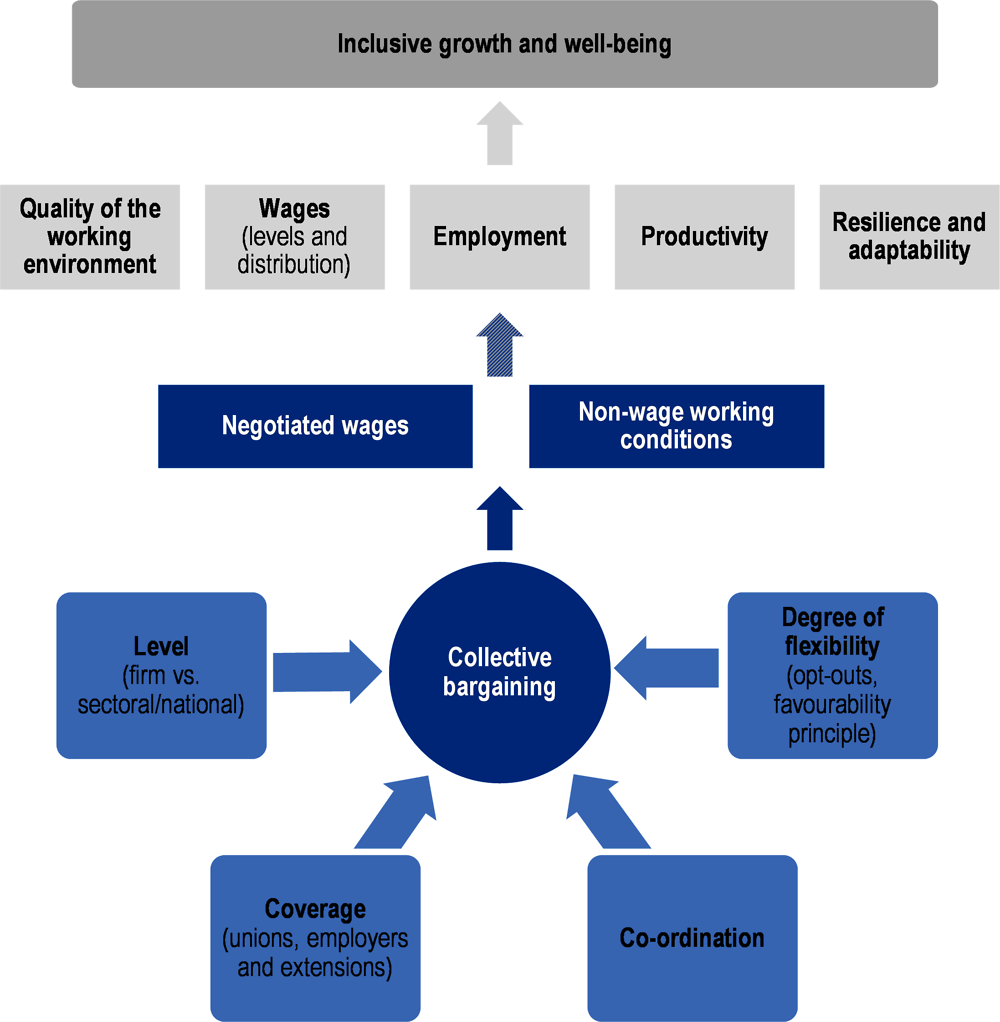Parent-teacher groups and local community organizations have long been a part of the American heritage of working together to improve the lives of their families and communities. Working people form unions to make changes where they spend most of their time working (Edelman, 2016). The workers’ right to organize and bargain collectively with their employers is widely recognized as fundamental freedom across the globe. In the United States, most people favor this right, which is guaranteed by the Constitution and US law. In the future, individuals will join labor unions for many reasons.

Collective bargaining gives workers a voice at work and the ability to change their working conditions. It is the job of union representatives to make sure that the rights and obligations set out in a collective bargaining agreement are upheld once it has been negotiated, as in figure 1. In high-stakes situations, such as when a safety violation results in an injury, they represent workers (Edelman, 2016). Employees benefit from collective bargaining, as shown in figure 1 above because they have a say in the conditions of their employment and because they have confidence that particular mechanisms for managing work-related complaints exist.
Like the rest of the US and the world, Union workers are diverse; therefore, they must accomplish shared goals. In the minds of many, a factory worker is the traditional union member. Although manufacturing has a long history of Unionization, people join unions in various industries and professions (Arora & Thompson, 2019). The union’s members, who include students, dentists, firefighters, security guards, and scientists, represent workers from a wide range of fields. Unions used to be primarily reserved for white workers, but today anybody may join one.
A wide range of businesses, even those in the “new economy” have strong unions. To have a say in their occupations and workplaces, workers join unions. Looking at the most quickly changing firms, industries, and professions, you can see why unions are doing so well. Unions have been more popular among American workers as their feeling of belonging to an industry or class has diminished (Széll, 2018). In the future, people and labor unions will interact differently because workers from any industry may join labor unions and benefit from their benefits.
Workers’ participation in policy debates is made possible by unions, contributing to a more democratic society. Unions safeguard the financial interests of business owners, management teams, and CEOs. It is how commerce, national trade groups, and business associations work (Széll, 2018). Working people may join unions to get their voices heard in the policy debates that touch their lives. Since they will have a single prominent voice, they will continue to attract new workers (Williams, 2018). For instance, figure 1 above shows that unions lead to flexibility of workers, coordination, and coverage during negotiations regarding wages and non-wage conditions.
Having a union may help women’s wages and those of African Americans and Hispanics. Blacks and Hispanics, and women’s earnings were lagging behind white males (Arora & Thompson, 2019; Mwenda, Muturi & Ouma Oluga, 2018). For this reason, creating pay “transparency” (where employees can see what their coworkers earn) and addressing pay inequities, as well as assisting employees who have been discriminated against, are all critical first steps.
An ever-evolving group of American economic and worldwide organizations, unions, provides workers a voice and influence over their working conditions and socioeconomic policy decisions that impact them. Collective bargaining is essential if workers want to achieve economic parity. Consequently, this suggests that people will need to join labor unions to reap the benefits of collective bargaining agreements in the future. The current labor organizations have proved various benefits, which are more promising when workers come together with a common goal regarding their welfare.
References
Arora, P., & Thompson, L. H. (2019). Crowdsourcing as a platform for digital labor unions. International Journal of Communication, 12, 2314-2332.
Edelman, M. (2016). The future of college athlete players unions: Lessons learned from Northwestern University and potential next steps in the college athletes’ rights movement. Cardozo Law Review, 38, 1627.
Mwenda, A. S., Muturi, A., & Ouma Oluga, F. (2018). Six stormy years and the audacity to confront a challenging future: Taking stock of the Kenyan Doctors’ Union. Pan African Medical Journal, 31.
Széll, G. (2018). The future of cooperatives and Trade Unions: The relevance for the question of democratization of society.International Review of Sociology, 28(2), 234–249.
Williams, B. (2018). Somebody’s knocking, should I let them in?: The fight over unions enters the home.SSRN Electronic Journal, 43.